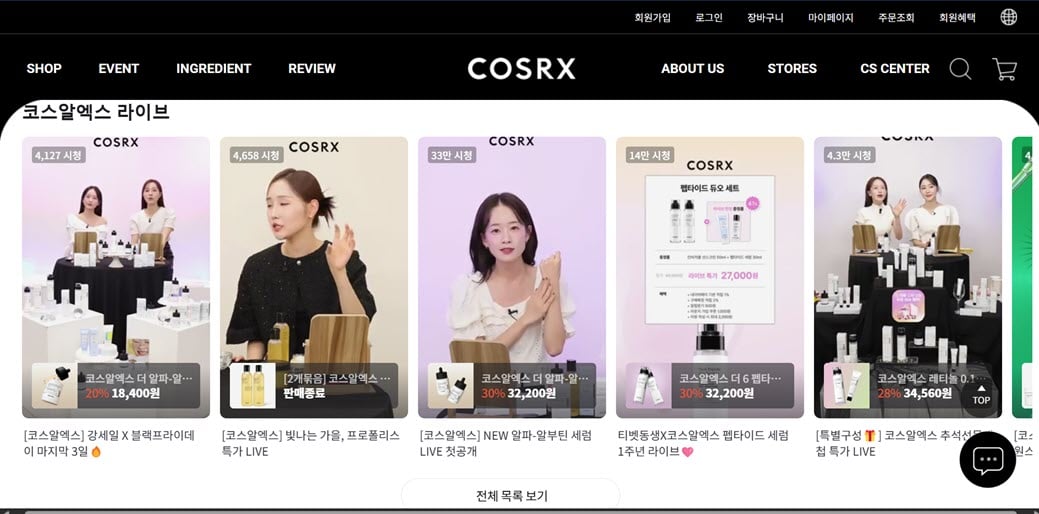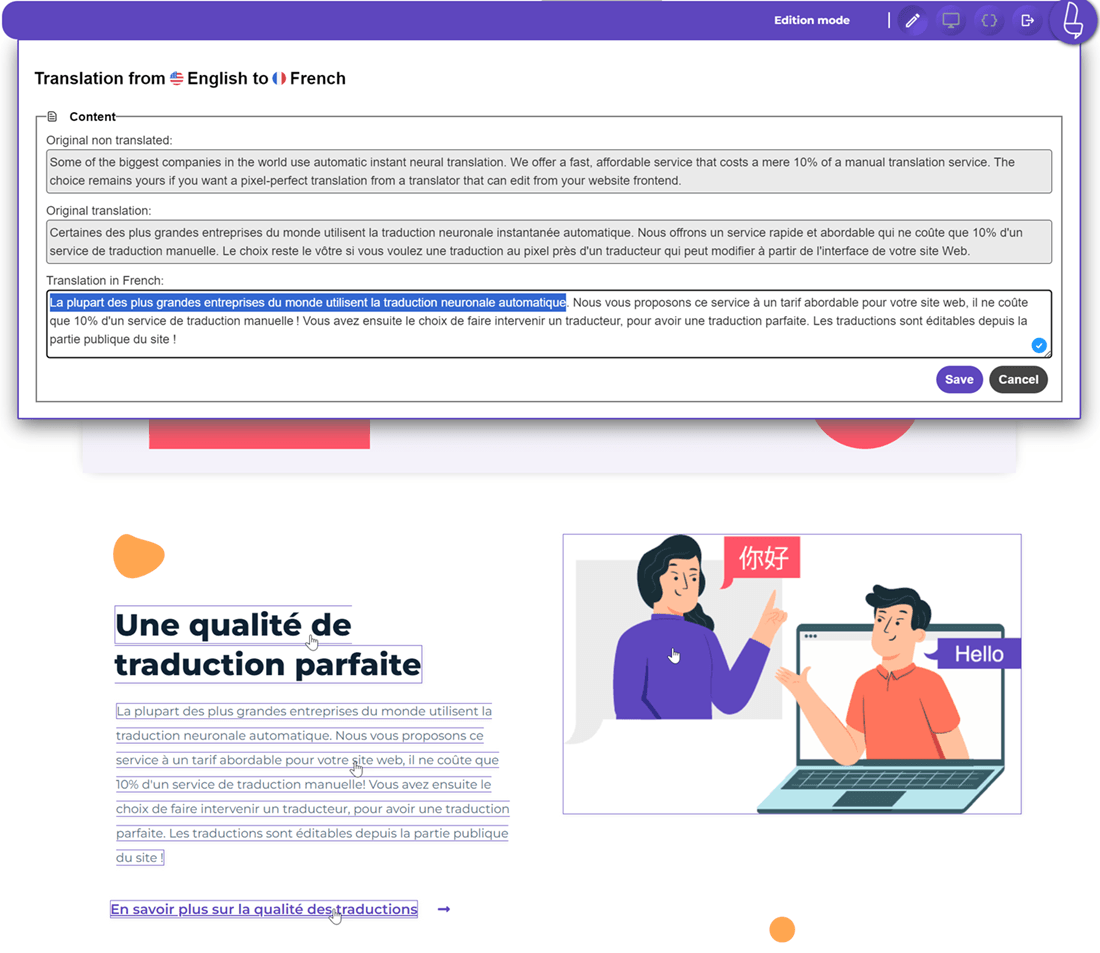As more businesses expand their reach to international markets, the need for localization strategies is increasing. Website localization allows your website to be tailored to the personalization or customs of the audience’s culture/country.
However, localization can’t rely solely on translation—it also depends on a deep understanding of the cultural context and the needs of local users. That’s why this article will discuss the top localization trends and provide a practical guide for businesses to take advantage of them.
Top localization trends to watch in 2025: A guide for global businesses
Localization is necessary to communicate effectively across languages and countries and is increasingly becoming a strategic priority for global businesses. In this guide, we will discuss the key trends predicted to shape the future of localization.
#1 AI-powered and industry-specific translation takes the lead

Artificial intelligence (AI) has revolutionized how businesses translate and localize content. Language models such as GPT-4 Turbo and Gemini 1.5 can now produce translations that are not only facially accurate but also consider cultural context and nuances, making them highly effective for industries such as law, healthcare, and technology.
The adoption of AI in translation services is increasing rapidly. According to SEO Sandwitch, by 2025, 70% of global businesses will integrate AI-based translation tools into their operations. The utilization of AI is currently being used in various industries including
- E-commerce: 62% increase in AI translation adoption (Shopify)
- Healthcare: 48% use of AI translation for international patient communications (HIMSS)
- E-learning: 1 billion course translations processed (LinkedIn Learning)
- Financial: 25% reduction in compliance risk (Finextra)
- Customer Service: 25% of interactions supported by real-time translation apps (Zendesk)
- Tourism: 30% increase in multilingual engagement (TripAdvisor)
And many other industries are adopting AI.
#2 Real-time multilingual content adaptation

Real-time adaptation of multilingual content is one of the major trends in localization today. Today’s consumers expect faster and more personalized experiences. Businesses that can adapt their content to local needs in real time have a huge advantage in user experience (UX) and conversions.
Using technologies like AI, companies can instantly change their content based on the user’s language and culture.
For example, when someone visits a website from France, they can instantly see translated content, adapted to the local culture, and even relevant images and visual elements. This real-time adaptation creates a more relevant experience for users, which can help increase customer satisfaction and product conversion opportunities.
#3 Brand-driven personalization in localization

Personalization isn’t just about greeting users by their name. It’s about making your brand feel close and relevant to audiences in every country. In 2025, this approach is becoming even more crucial as global consumers not only want to understand your message, they want it to resonate with their culture, communication style, and personal values.
Here are the key elements you should adapt in brand-driven localization to ensure your brand feels personal and relevant in local markets without losing its identity.
- Tone of voice – Adjust your language style to fit the local audience—formal in Japan, casual in Indonesia, or humorous in Brazil.
- Word choice and idioms – Use terms and expressions that are common and easily understood in each country. Avoid literal translations that might sound awkward or unnatural.
- Visuals and colors – Some colors and symbols carry different meanings across cultures. Ensure your visual design remains appealing and doesn’t offend local cultural values.
- Images and illustrations – Use photos of people, places, or situations that are familiar to your target market so the content feels more relatable.
- Local consumer habits – Tailor your content to local preferences, such as shopping habits, promotional timing, or lifestyle trends.
- Cultural references and local trends – Include local elements like holidays, traditions, or popular figures to help your brand feel more connected to users’ everyday lives.
By aligning all these elements, you can deliver a user experience that feels local while still carrying a consistent brand essence wherever your audience may be. Thinking of entering the global market? This is one of the keys to success.
For example, Korean skincare brand COSRX features web content that uses the Korean language style and models of Korean ethnicity to appeal authentically to its local market.

When they want to enter the Indonesian market, they can use a more relaxed language style to suit local trends, as well as use native Indonesian models.

#4 Rise of voice, video, and multimedia localization
The fourth trend is multimedia content such as videos, podcasts, and interactive audio, which is increasingly dominating digital marketing strategies. Nowadays, localization trends focus not only on text but also on sound and visual elements.
This is important because people now consume information more through visual and audio content that is fast, practical, and engaging.
Voiceovers in local languages, accurate subtitles, and adaptation of visual elements (such as in-video text, graphics, or cultural references in dialogue) are important to this strategy. For example, Netflix uses dubbing and subtitles in dozens of languages to deliver a relevant viewing experience in different countries, without compromising the original message of the series or movie. Here are some forms of localization in multimedia content that are gaining popularity.
- Localized voiceovers for video commercials, tutorials, or podcasts
- Subtitles and closed captions that are not only translated, but also adjusted for context and language style
- Visual localization, such as replacing graphic text, product images, or cultural icons
- Audio adaptation to adjust tone, accent, and speaking style to the target culture
This strategy allows brands to create more inclusive, engaging, and effective content to reach various global segments.
#5 Embracing cultural nuance and contextual accuracy

In localization, the right translation is not necessarily the right one. Global businesses are considering cultural nuances more, especially the little things related to local customs, values, and ways of communicating. This is important because audiences in different countries can have different interpretations of the same words, images, or messages.
For example, an ad with sarcastic humor that works in the UK could be rude in Japan. Or a hand symbol that is considered neutral in one culture could be offensive in another. Without understanding the local cultural context, brands can make missteps and lose audience trust.
For example, when McDonald’s entered the Indian market, it didn’t just translate the menu into the local language. It also changed its signature products, such as replacing beef with chicken or vegetables, because the Hindu community considers cows sacred. This is not just an adaptation of flavors but a form of respect for local cultural values that keeps the brand relevant and well-received.
Understanding context like this can prevent miscommunication and build a stronger connection with consumers.
#6 Machine Translation Post-Editing (MTPE) becomes standard
With the advancement of technology, machine translation (MT) can now produce fast and accurate translations for many languages. However, despite its efficiency, MT still needs to be improved to sound natural and culturally appropriate. This is why Machine Translation Post-Editing (MTPE) is the current localization standard.
MTPE is a process where a human translator edits the machine-generated translation. This is crucial to ensuring the quality of the content produced remains professional and relevant to the target audience.
For example, a global company translating its website into multiple languages would use MT to translate the base text. Then MTPE would check and correct the translation to match the brand tone and local context.
As such, MTPE helps combine the speed of machines and the high quality of human translators, making it more efficient and less costly than manually translating the entire content from scratch.
#7 Human translators shift to strategic and editorial roles

With the advancement of AI translation, the role of human translators no longer focuses on translating word-for-word. They are now moving into more strategic roles as editors, cultural consultants, and quality reviewers. Technology can help speed up, but only humans can understand the emotional context, humor, and tone of communication that suits the target audience.
Translators are now more involved in the editorial process, fine-tuning AI translations to sound natural, adjusting the tone to match the brand voice, and ensuring there are no cultural miscommunications that could damage the brand’s reputation.
An example of this strategic role is seen in the gaming or film industry, where human translators become localization editors. They adjust dialogue to keep it relevant and engaging in local markets without losing the essence of the original story. So, while AI helps speed up the process, the final quality still requires a human touch.
#8 No-code localization empowers every team
In the past, the localization process often required the help of a team of developers-from system integration to manual updates to language files. But nowadays, the no-code approach is dominating. The result? The process is faster, the costs are more efficient, and the team can be more independent in reaching global markets.
No-code localization tools allow you to translate website content, apps, or other digital materials through an easy-to-use visual interface. These tools are also often equipped with real-time editing, CMS integration, and the ability to preview the translation directly on the original page, without redeploying.
One example of no-code localization tools is Linguise AI-powered localization, which enables multilingual websites in minutes. This tool supports an easy-to-use localization feature, namely a front-end live editor like the following.
You only need to select the part you want to localize, select the language, and input the localization results.
#9 Automated workflows replace manual localization

In the context of localization, an automated workflow is a system that automates various steps in the translation and content update process, allowing businesses to manage multilingual websites or applications more quickly and efficiently.
For example, if a product or promotion changes on an e-commerce site, an automated workflow can immediately update the translation across multiple languages without requiring manual input. This allows updates to be made in real-time and simplifies coordination between teams in different countries.
In addition, this process is often accompanied by Machine Translation Post-Editing (MTPE) to ensure the quality of the translation remains accurate and appropriate to the local context. So, this automation helps businesses save time, reduce costs, and ensure content is always up-to-date in international markets.
#10 Security and data privacy-driven localization

As awareness of data security and privacy issues grows, companies increasingly prioritize data protection in their localization strategies. Many countries have strict regulations on how user data is collected, stored and processed. Therefore, companies must ensure their localization processes comply with local data privacy laws, such as GDPR in Europe or CCPA in California.
An obvious example is technology companies that operate cloud services or data-driven applications. These companies must customize their privacy policies and user data management to comply with local regulations in each country. This data security-minded localization protects companies from legal risks and increases consumer confidence in international markets.
How can businesses leverage these trends?

Here are some steps businesses can take to maximize the localization trend and expand their reach globally.
Deeply understand the local audience
One of the most crucial steps for businesses to benefit from localization trends is gaining a comprehensive understanding of the local audience—including their language, habits, cultural values, and how they interact with content. This helps in choosing the right tone of voice and influences visual design, product selection, and marketing strategies.
By understanding the local audience, businesses can create experiences that feel more relevant and personal. For example, promotional content in Japan might differ vastly from that in Brazil, even when offering the same product. The deeper this understanding, the greater the potential for customer engagement.
Leverage AI and automation for scalability
AI and automated workflows allow businesses to localize at scale without drastically increasing team workloads. Technologies like Machine Translation Post-Editing (MTPE), real-time content adaptation, and integrated CMS systems can speed up the process while maintaining translation quality.
By implementing AI solutions tailored to their industry, companies can reduce operational costs and accelerate time to market—crucial for global businesses aiming to stay competitive and agile in a fast-moving market.
Use no-code localization tools for team collaboration
No-code platforms like Linguise enable non-technical teams to participate in the localization process. This makes localization more inclusive and collaborative—for instance, marketing teams can directly tailor messages for local targets without relying heavily on developers.
With more team members involved, the localization process becomes faster and more dynamic. This is especially helpful when launching cross-country promotional campaigns or quickly updating content.
Focus on global brand consistency
Even though every market has its own uniqueness, maintaining consistent brand identity is key. This means your tone of voice, brand values, and visual style should feel coherent—even when translated into different languages and adapted for various cultures.
Brand-driven personalization isn’t about changing all your content, but about adapting it so it remains aligned with your brand while feeling familiar to local audiences. This consistency strengthens brand awareness and trust in global markets.
Conclusion
Localization trends in 2025 show that global businesses must go beyond just translating languages. With the rise of AI technology, brand personalization, real-time content, and multimedia localization, companies must understand local cultures more deeply to build strong and relevant connections with global audiences.
This is where Linguise comes in. With AI translation technology and practical no-code features, Linguise makes it easy for businesses to deliver multilingual content in real time. Try Linguise today and experience the ease of localization in just minutes!






